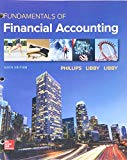
1.
To Compute: The present value of the note, rounded to the nearest dollar, using a typical interest rate of 6%.
1.
Answer to Problem 3PB
The present value of the note, rounded to the nearest dollar, using a typical interest rate of 6%, is $53,460.
Explanation of Solution
Present value is the amount of future value reduced or discounted at a rate of interest till particular current date.
Formula to compute present value of single payment with tables:
Compute the present value of the note, rounded to the nearest dollar, using a typical interest rate of 6%.
2.
To Journalize: An entry to record the purchase of the equipment, rounded to the nearest dollar.
2.
Answer to Problem 3PB
The
| Date | Account Title | Debit ($) | Credit ($) |
| Equipment | $53,460 | ||
| Notes payable | $53,460 | ||
| (To record the purchase of equipment) |
Table (1)
Explanation of Solution
Journal entry: Journal entry is a set of economic events which can be measured in monetary terms. These are recorded chronologically and systematically.
Debit and credit rules:
- Debit an increase in asset account, increase in expense account, decrease in liability account, and decrease in
stockholders’ equity accounts. - Credit decrease in asset account, increase in revenue account, increase in liability account, and increase in stockholders’ equity accounts.
3.
To Journalize: An
3.
Answer to Problem 3PB
The adjusting entry to record first payment at the end of the first year is shown below.
| Date | Account Title | Debit ($) | Credit ($) |
| Interest Expense (1) | $3,208 | ||
| Notes payable (2) | $16,792 | ||
| Cash | $20,000 | ||
| (To record the first payment) |
Table (2)
Explanation of Solution
Journal entry: Journal entry is a set of economic events which can be measured in monetary terms. These are recorded chronologically and systematically.
Debit and credit rules:
- Debit an increase in asset account, increase in expense account, decrease in liability account, and decrease in stockholders’ equity accounts.
- Credit decrease in asset account, increase in revenue account, increase in liability account, and increase in stockholders’ equity accounts.
Working Notes:
Calculate the interest on the notes payable:
Calculate the amount paid on the notes payable:
4.
To Journalize: An adjusting entry to record the second payment at the end of the second year.
4.
Answer to Problem 3PB
The adjusting entry to record the second payment at the end of the second year is shown below.
| Date | Account Title | Debit ($) | Credit ($) |
| Interest Expense (3) | $2,200 | ||
| Notes payable (4) | $17,800 | ||
| Cash | $20,000 | ||
| (To record the second payment) |
Table (3)
Explanation of Solution
Journal entry: Journal entry is a set of economic events which can be measured in monetary terms. These are recorded chronologically and systematically.
Debit and credit rules:
- Debit an increase in asset account, increase in expense account, decrease in liability account, and decrease in stockholders’ equity accounts.
- Credit decrease in asset account, increase in revenue account, increase in liability account, and increase in stockholders’ equity accounts.
Working Notes:
Calculate the interest on the notes payable:
Calculate the amount paid on the notes payable:
5.
To Journalize: An entry to record the payment for the equipment, rounded to the nearest dollar.
5.
Answer to Problem 3PB
The journal entry to record the payment for equipment is shown below.
| Date | Account Title | Debit ($) | Credit ($) |
| Interest Expense (5) | $1,132 | ||
| Notes payable (6) | $18,868 | ||
| Cash | $20,000 | ||
| (To record the third payment) |
Table (4)
Explanation of Solution
Journal entry: Journal entry is a set of economic events which can be measured in monetary terms. These are recorded chronologically and systematically.
Debit and credit rules:
- Debit an increase in asset account, increase in expense account, decrease in liability account, and decrease in stockholders’ equity accounts.
- Credit decrease in asset account, increase in revenue account, increase in liability account, and increase in stockholders’ equity accounts.
Working Notes:
Calculate the interest on the notes payable:
Calculate the amount paid on the notes payable:
Want to see more full solutions like this?
Chapter C Solutions
GEN COMBO LL FUNDAMENTALS OF FINANCIAL ACCOUNTING; CONNECT ACCESS CARD
- Joe transfers land to JH Corporation for 90% of the stock in JH Corporation worth $20,000 plus a note payable to Joe in the amount of $40,000 and the assumption by JH Corporation of a mortgage on the land in the amount of $100,000. The land, which has a basis to Joe of $70,000, is worth $160,000. a. Joe will have a recognized gain on the transfer of $90,000. b. Joe will have a recognized gain on the transfer of $30,000.c. JH Corporation will have a basis in the land transferred by Joe of $70,000. d. JH Corporation will have a basis in the land transferred by Joe of $160,000. e. None of the above.arrow_forwardPlease provide the correct answer to this general accounting problem using accurate calculations.arrow_forwardCan you solve this general accounting question with accurate accounting calculations?arrow_forward
- (1) prepare the december 31 entry for bramble corporation to record amortization of intangibles. the trademark has an estimated useful life of 4 years with a residual value of $3,520arrow_forwardaccounting ?arrow_forwardPlease provide the accurate answer to this general accounting problem using appropriate methods.arrow_forward
 EBK CONTEMPORARY FINANCIAL MANAGEMENTFinanceISBN:9781337514835Author:MOYERPublisher:CENGAGE LEARNING - CONSIGNMENT
EBK CONTEMPORARY FINANCIAL MANAGEMENTFinanceISBN:9781337514835Author:MOYERPublisher:CENGAGE LEARNING - CONSIGNMENT Cornerstones of Financial AccountingAccountingISBN:9781337690881Author:Jay Rich, Jeff JonesPublisher:Cengage Learning
Cornerstones of Financial AccountingAccountingISBN:9781337690881Author:Jay Rich, Jeff JonesPublisher:Cengage Learning Intermediate Accounting: Reporting And AnalysisAccountingISBN:9781337788281Author:James M. Wahlen, Jefferson P. Jones, Donald PagachPublisher:Cengage Learning
Intermediate Accounting: Reporting And AnalysisAccountingISBN:9781337788281Author:James M. Wahlen, Jefferson P. Jones, Donald PagachPublisher:Cengage Learning



